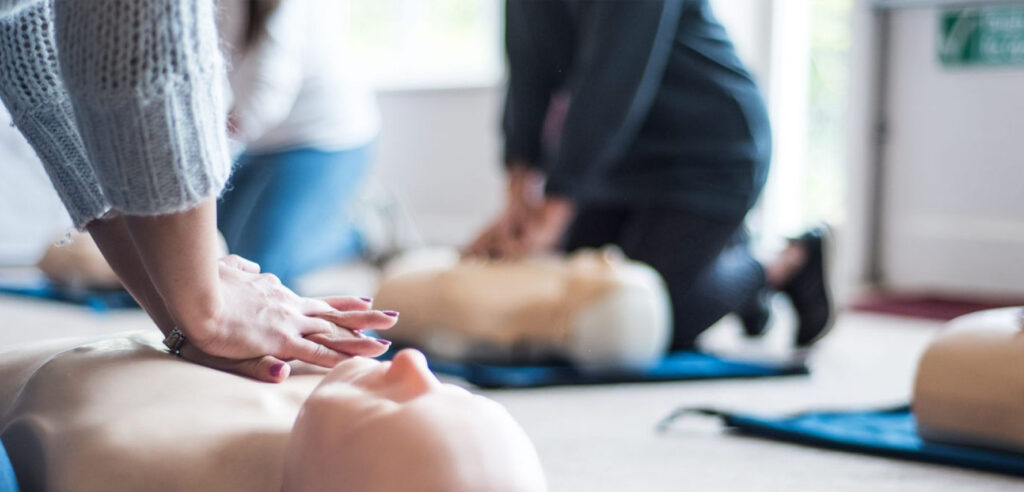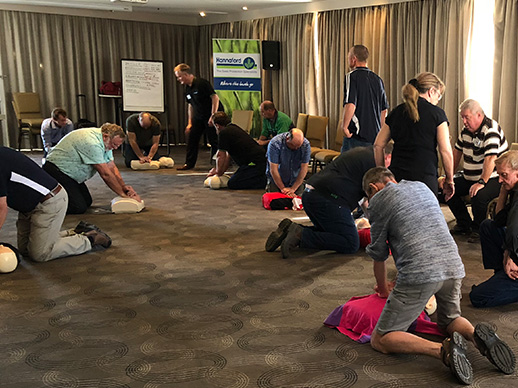In the fast-paced world of healthcare, every second counts in saving lives. Cardiopulmonary Resuscitation (CPR) is vital in healthcare careers, serving as a crucial life-saving technique in emergencies.
Proper CPR training is essential for medical professionals, equipping them with the necessary skills to respond effectively and confidently in critical moments. This blog post will delve into the importance of CPR course Brisbane for healthcare professionals, exploring its benefits to their skill set, job prospects, and overall career development.
So, if you are a medical professional looking to enhance your abilities or an aspiring healthcare practitioner seeking to enter the field, read on to discover the significance of enrolling in a CPR course.
Understanding CPR
Cardiopulmonary Resuscitation, commonly known as CPR, is used to manually restore blood circulation and breathing in individuals experiencing cardiac arrest or respiratory failure.
In healthcare settings, CPR is performed when a person’s heart stops beating or when they stop breathing. The purpose of CPR is to maintain the flow of oxygen-rich blood to vital organs, such as the brain and heart until advanced medical help arrives. Without timely and effective CPR, the chances of survival decrease significantly.
Medical professionals, in particular, play a critical role in performing CPR as they are often the first responders in emergencies. Whether it’s a physician, nurse, or paramedic, a thorough understanding of CPR is essential in providing immediate and life-saving patient care. By correctly administering CPR, medical professionals can increase the chances of a patient’s survival, making it a crucial skill in any healthcare career.
Benefits of CPR Training for Medical Professionals
Aside from the apparent life-saving potential, CPR training offers numerous benefits to medical professionals. Firstly, CPR training enhances a medical professional’s skill set, making them more versatile and valuable. The ability to perform CPR saves lives and demonstrates a commitment to patient care and safety. This additional skill set can set a medical professional apart from their peers and open doors to career advancement opportunities.
Furthermore, CPR training can increase job prospects for medical professionals. Many healthcare facilities prioritise hiring candidates who possess CPR certification due to the immediate value they bring to the team. Whether it’s a hospital, clinic, or emergency response unit, employers recognise the importance of having staff who can handle critical situations confidently and competently. By obtaining CPR certification, medical professionals can expand their career options and increase their chances of securing employment in their desired healthcare setting.
Lastly, CPR training provides medical professionals with a significant confidence boost. Knowing they possess the skills to save a life potentially instils reassurance and self-assurance. This newfound confidence can positively impact their performance and job satisfaction, leading to a more fulfilling healthcare career.

Types of CPR Certification Courses Available
Different types of CPR certification courses are available to medical professionals, each tailored to specific healthcare career paths and levels of expertise. Two common types of CPR course Brisbane are Basic Life Support (BLS) and Advanced Cardiac Life Support (ACLS) courses.
BLS courses are typically designed for healthcare professionals who must have a basic understanding of CPR. These courses cover essential CPR techniques, including chest compressions, rescue breathing, and automated external defibrillators (AEDs). BLS certification is often a prerequisite for medical professionals in hospitals, clinics, or emergency medical services.
On the other hand, ACLS courses are more advanced and are designed for medical professionals who require a deeper understanding of CPR techniques and the management of cardiac emergencies. ACLS certification is typically required for healthcare professionals in critical care units, emergency departments, or intensive care units.
In addition to BLS and ACLS courses, specialised CPR courses may be relevant to specific healthcare career paths. For example, paediatric CPR courses focus on resuscitation techniques for infants and children, while neonatal CPR courses cater to medical professionals working with newborns in intensive care units.
Finding the Right CPR Course
When it comes to finding the right CPR course Brisbane, it is crucial to choose a reputable training provider or institution. The certification obtained from the course should be recognised and accepted in the healthcare industry. Consider factors such as certification validity, course duration, and cost when deciding.
Certification validity is an essential consideration, as CPR certifications typically have an expiration date. Ensure that your chosen course provides certification that aligns with industry standards and has a reasonable validity period. This will save you from the hassle of renewing your certification too frequently.
Course duration may vary depending on the level of certification and the training provider. Some courses may be completed in a single day, while others may span several weeks. Consider your availability and schedule when choosing a course duration that suits your needs.
Cost is another factor to consider. CPR courses may vary in price, depending on the level of certification, training provider, and additional materials provided. While cost should not be the sole determining factor, finding a course that offers value for money is important.
To ensure the quality of the training, it is recommended to seek recommendations from peers or professional associations. Colleagues who have undergone CPR training can provide valuable insights into their experience with specific training providers. Additionally, professional associations may have a list of recommended training providers that meet industry standards.
What to Expect During a CPR Course
CPR courses typically consist of both theoretical and practical components. The theoretical portion covers essential knowledge related to CPR, including the basic anatomy and physiology of the heart, the chain of survival, and the correct sequence of steps to perform CPR. This theoretical foundation provides medical professionals with a comprehensive understanding of the rationale behind CPR techniques and the importance of each step.
The practical component of a CPR course involves hands-on training exercises. Medical professionals will have the opportunity to practice chest compressions, rescue breathing techniques, and the use of AEDs on mannequins or simulation models. These hands-on exercises allow medical professionals to develop muscle memory and gain confidence in performing CPR effectively.
Before attending a CPR course, medical professionals may have common concerns or anxieties. These concerns can include fear of performing CPR incorrectly, about causing harm to the patient, or anxiety about the high-stress nature of emergencies. It is important to address these concerns head-on, as proper training can alleviate these fears. CPR courses are designed to provide medical professionals with the knowledge and skills necessary to respond confidently and appropriately in emergencies.
In the realm of healthcare, CPR is a fundamental life-saving technique. For medical professionals, proper CPR training is essential, enabling them to respond effectively in critical situations. CPR training enhances their skill set, increases job prospects, and boosts confidence in their ability to save lives. By enrolling in a reputable CPR course Brisbane, medical professionals can gain the knowledge and skills necessary to provide immediate and effective care in emergency situations. So if you are a medical professional looking to enhance your career or an aspiring healthcare practitioner seeking to enter the field, prioritise obtaining and maintaining CPR certification. Remember, a CPR course may be the key to making a life-saving difference in someone’s life.

